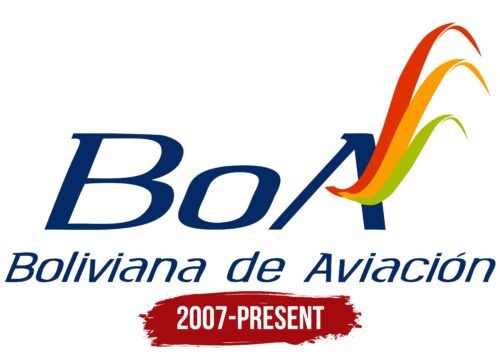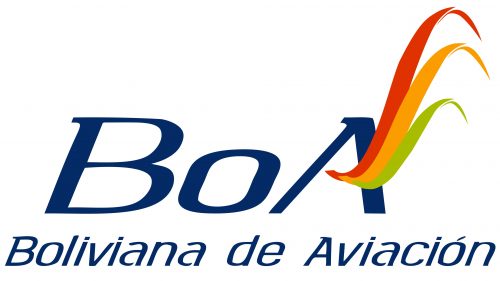 Boliviana de Aviación Logo PNG
Boliviana de Aviación Logo PNG
The Boliviana de Aviación logo symbolizes reliability and government support, making passengers confident when flying to different destinations. The simple yet meaningful logo meant that you were flying with Bolivia’s leading airline, connecting different regions of the country and beyond.
Boliviana de Aviación: Brand overview
Bolivia’s national airline started on October 24, 2007. It was established by a presidential decree from Evo Morales after the previous national carrier, Lloyd Aéreo Boliviano, failed. This was a strategic decision to revitalize Bolivia’s aviation sector.
After much planning and preparation, the company began operations on March 30, 2009, connecting La Paz with major cities like Santa Cruz and Cochabamba. By 2010, it had expanded its domestic network and was known for its reliable service. In 2011, it started international flights to Buenos Aires, São Paulo, and Lima, supported by a growing fleet that included modern aircraft like the Boeing 737-300 and 767-300.
On its fifth anniversary in 2014, the airline introduced a new look and brand identity, celebrating its commitment to innovation and quality. The following year, it moved its headquarters to Cochabamba to better connect and support its operations across Bolivia.
Under Ronald Casso’s leadership, it expanded its international routes in 2016, adding cities such as Miami and Madrid to its destinations. During this period, it became a leader in the Bolivian aviation market, aiming to connect Bolivia worldwide.
The company faced significant challenges during the 2020 pandemic, which hit the global airline industry hard. Despite these difficulties, thanks to government assistance and its staff’s dedication, it could continue flying, demonstrating great resilience.
The airline plays a crucial role in the Bolivian economy, with a wide network of domestic and international routes. Its modern fleet makes it a forward-thinking company ready to continue shaping Bolivia’s aviation future.
Meaning and History
What is Boliviana de Aviación?
Boliviana de Aviación, commonly known as BoA, is Bolivia’s flagship airline, wholly owned by the state. Its official name, Empresa Pública Nacional Estratégica Boliviana de Aviación, reflects the airline’s strategic importance in the country’s transportation infrastructure. The airline’s history dates back to 2007 when it was created to replace the financially struggling Lloyd Aéreo Boliviano as the country’s flagship carrier. Despite starting its operations amidst global economic instability, the airline has become a prominent player in Latin American aviation. Through continuous improvement and strategic investments, the airline has provided crucial domestic and international connectivity, playing an important role in Bolivia’s economic development.
2007 – today
Boliviana de Aviacion’s logo is bright, bold, and authentic. The company chose a stylized bird as its symbol to stay true to the aviation theme. The bird’s lush, long tail is painted in three shades: red, orange, and green, which corresponds to the national colors of the country in which the airline operates. The text part of the emblem is arranged in two lines. The upper line contains the abbreviated form of the company name, where instead of the crossbar of the letter “A,” there is a multicolored feather. The lower line is typed in bold italics, and the inner part of some glyphs is pointed.
The multicolored bundle of feathers replacing the letter gives the logo an artistic and national character, linking it to the culture and landscape of Bolivia. The choice of bold italics for the bottom line gives the text a sense of urgency and movement, keeping with the fast-paced nature of the aviation industry. The pointed inner part of some of the glyphs gives the logo a unique character, setting it apart in a competitive market.
FAQ
What is boa bo?
“BOA BO” probably refers to the IATA code “OB” of Boliviana de Aviación. This code helps identify the company on tickets, flight schedules, and air traffic control authorities. Known as BoA, it is Bolivia’s national airline and is key in connecting Bolivia to the world. It has a diverse fleet of aircraft, including the Boeing 737, Airbus A330 and Bombardier CRJ-200. Operates flights to 21 destinations in 8 countries in America and Europe. This network supports passenger and freight transport, promoting tourism and business development in Bolivia.
Does Boa have business class?
Yes, some airline flights offer business class along with economy class. Business class offers passengers more comfort, amenities, and better service than economy class. Business class passengers receive the best service, including quality meals, a variety of drinks, and sometimes free alcoholic drinks. The meals are usually more elaborate and delicious and receive priority boarding and expedited check-in, making getting through the airport faster and easier. They can usually carry more luggage and have access to airline lounges, which are quiet spaces where they can work or relax before flying.
What airline is ob?
The airline with the IATA code “OB” is known as BoA and is the national carrier of Bolivia. It uses the official name “BoA – Boliviana de Aviacion” and operates in America.
The company is vital to Bolivia’s aviation industry as it connects the country domestically and internationally. It flies to many destinations in America and Europe, making Bolivia more accessible. It has a variety of aircraft that promote tourism and business by serving local and international passengers. Known for its reliability, it is focused on providing good service.
Who owns Boliviana de Aviacion?
Bolivia’s national airline, BoA, is owned by the Bolivian government. As a state-owned airline, it is a key part of Bolivia’s transport system, helping to operate domestic and international flights. The government’s control over the company means it can ensure it supports national goals, such as improving domestic connections and promoting economic growth. This structure allows it to focus on important national projects, such as providing flights to less profitable, remote areas vital to keeping the country connected.




